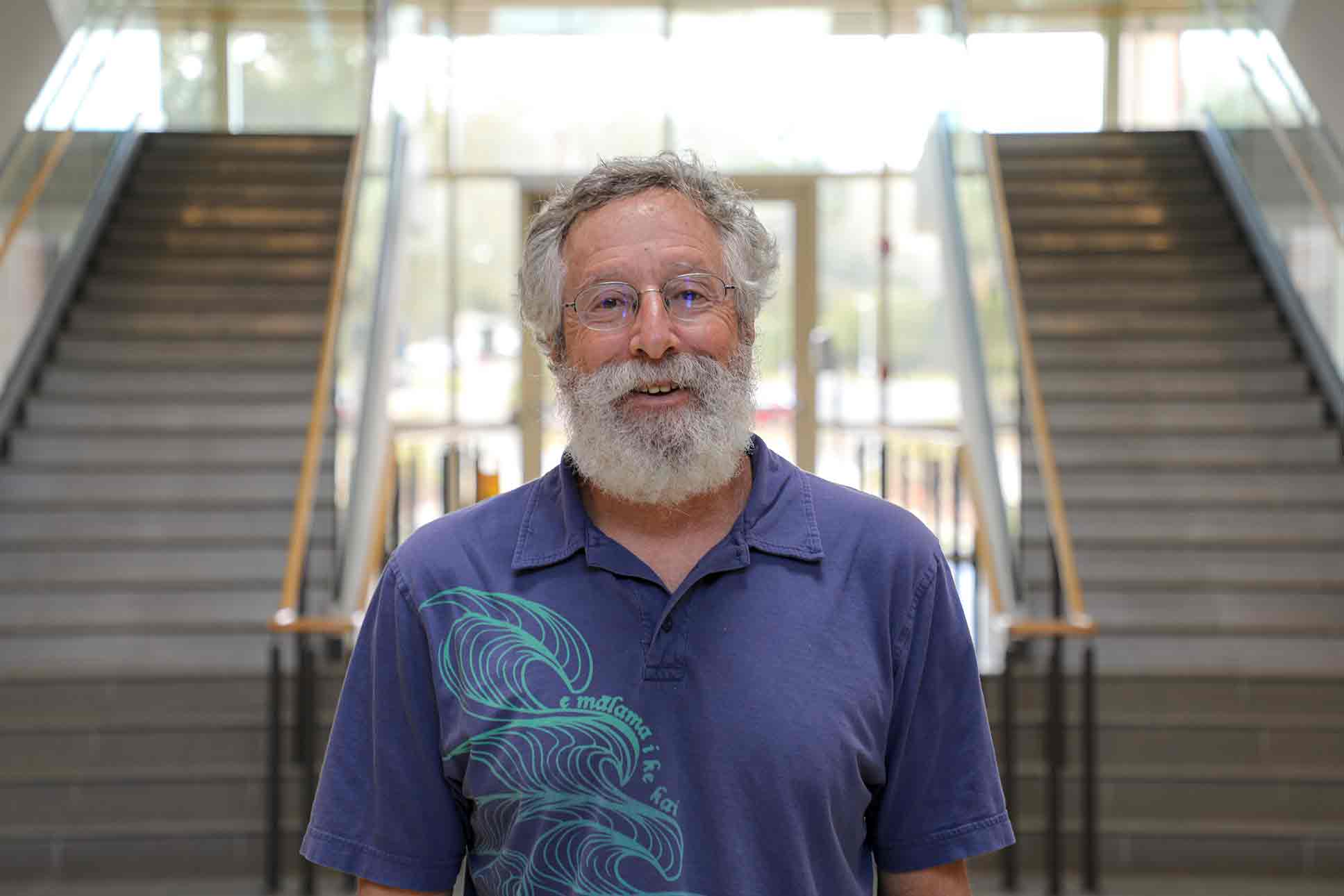FSU biologist uncovers how different coral reproduction methods shape Caribbean reefs’ future

A Florida State University ecology and evolutionary biologist has discovered that the reproductive methods of individual coral species play a crucial role in their ability to survive, and even thrive, amid a rapidly changing environment.
New research published by Professor of Biological Science Don Levitan examines how the mustard hill coral — a species found in the Caribbean that produces asexually — has survived at much higher rates than another form of coral that relies on the egg-and-sperm method of reproduction.
These findings were published in May in the journal Ecology.

“Coral reefs, particularly in the Caribbean, have undergone decades of degradation due to a variety of stressors, most or all attributed to human activities,” Levitan said. “However, not all coral species are declining at the same rate, and some species — at least for now — are still relatively common. This study highlights how a combination of long-term monitoring and modern genetic analysis techniques can uncover previously unknown patterns and processes of coral survival.”
This study emerged from data collected at the long-term reef monitoring site established in the 1980s in the U.S. Virgin Islands by co-author Peter Edmunds, professor of biology at California State University, Northridge. With data spanning nearly 40 years, the site has facilitated some of the most comprehensive studies of coral reefs to date, including this research.
“This article represents the culmination of years of collaboration with Dr. Levitan,” Edmunds said. “The public knows that reefs are in trouble. This study provides positive news, as it describes the ways select coral species can respond to challenging conditions. The reefs of tomorrow will look very different from those of the past, but our work reveals the ways one coral — the humble mustard hill coral — may come to dominate future Caribbean reefs.”
Levitan’s work directly compared the reproduction of mustard hill coral to that of lobed star coral.
Stretching up to 10 feet wide, the yellowish-brown lobed star coral resembles a bumpy boulder and creates critical structure for reef habitats. Like most corals, it reproduces by releasing eggs and sperm into surrounding waters; egg and sperm meet by chance before drifting to settle on another reef.
The mustard hill coral, however, is an exception. These corals, which are bright yellow and could fit in your outstretched palms, often reproduce asexually. Their larvae develop internally before being released, with asexual larvae forming genetically identical communities within individual reefs.
“Coral reefs consist of many species, each with their own characteristics and dynamics,” Levitan said. “The mustard hill coral is still subject to high mortality rates but persists because it is small, reaches maturity quickly, and produces offspring even if mates are not available. However, the physical structure of reefs is built by massive species like the lobed star coral and other externally fertilizing corals. Reefs flatten as these species decline, leading to a critical loss of habitats for many invertebrates and fish.”
Externally fertilized coral larvae can drift for several days or weeks until they settle on reefs, which may be anywhere from 2,000 feet to 100 miles away and home to conditions starkly different from the larvae’s reef of origin. This reproductive strategy is also sensitive to population density, as lower abundance can reduce the chances of sperm finding eggs.
Unlike externally reproducing species, mustard hill coral populations are genetically unique to each reef, consisting of family groups and clones, or individuals produced by asexual reproduction. The research team discovered this may be the key to the mustard hill coral’s population consistency amid ecological stress. Individuals that are able to survive on a particular reef can continue to produce successful genetic individuals, establishing a suitable reef environment over time.
“Projects like this are critical as we seek ways to protect what is left, ensure its longevity for our children, and train the next generation of scientists and managers to solve the problems they will inherit,” Edmunds said. “If we do not continue to rigorously and consistently study the environment — notably corals reefs — critical aspects of the natural world will slip away and live only on tablets and phones.”
Additional collaborators on this work include two FSU doctoral alumni and Levitan’s former students: Oregon State University research associate Kevin Olsen and University of North Carolina at Chapel Hill SPIRE postdoctoral fellow Rachael Best.
To learn more about biological science research at FSU, visit bio.fsu.edu.
The post FSU biologist uncovers how different coral reproduction methods shape Caribbean reefs’ future appeared first on Florida State University News.
Latest FSU News
- New Campaign Urges FSU Students to Keep Their Heads UpThe post New Campaign Urges FSU Students to Keep Their Heads Up appeared first on Florida State University News.
- Behind the Scenes: ACC Inventure PrizeThe post Behind the Scenes: ACC Inventure Prize appeared first on Florida State University News.
- ‘Welcome FSU’ offers summer events and activities for new and returning studentsNew and returning students can connect and get to know Florida State University this summer through “Welcome FSU,” a series […] The post ‘Welcome FSU’ offers summer events and activities for new and returning students appeared first on Florida State University News.
- FSU Researcher Helping Children who Have Been BulliedThe post FSU Researcher Helping Children who Have Been Bullied appeared first on Florida State University News.
- How FSU’s Stavros Center is distributing economics education around the worldThe study of economics transcends language and geographic barriers across the world, as individuals rely on its teachings to make […] The post How FSU’s Stavros Center is distributing economics education around the world appeared first on Florida State University News.
- Cody O’BrienCody O’Brien, a Florida State University civil and environmental engineering student in the FAMU-FSU College of Engineering, researches how architectural […] The post Cody O’Brien appeared first on Florida State University News.







